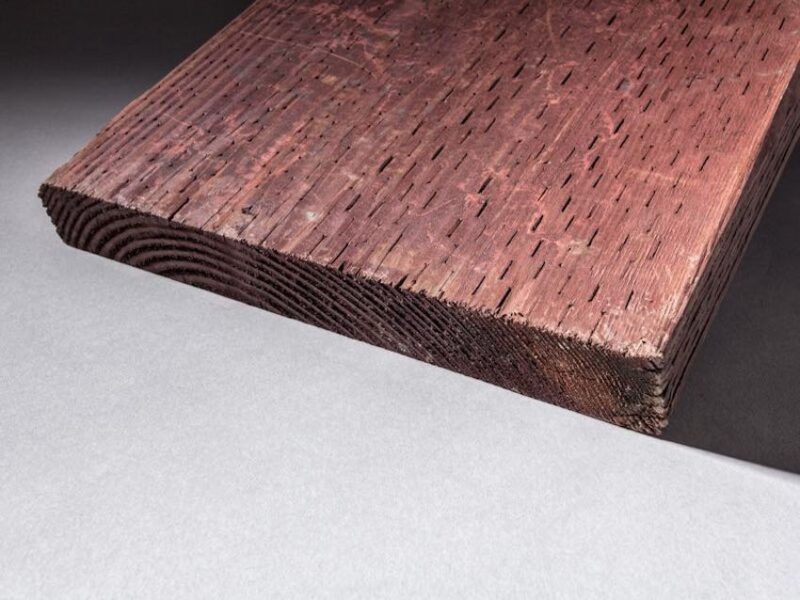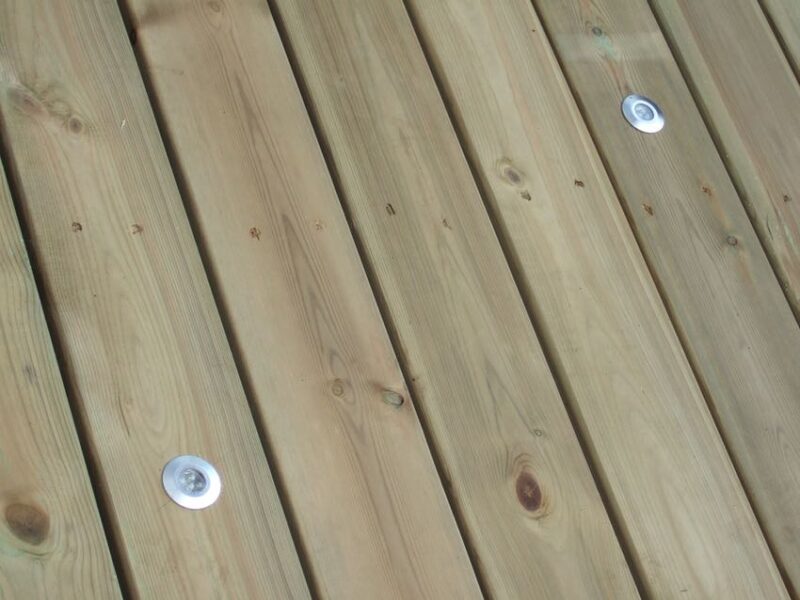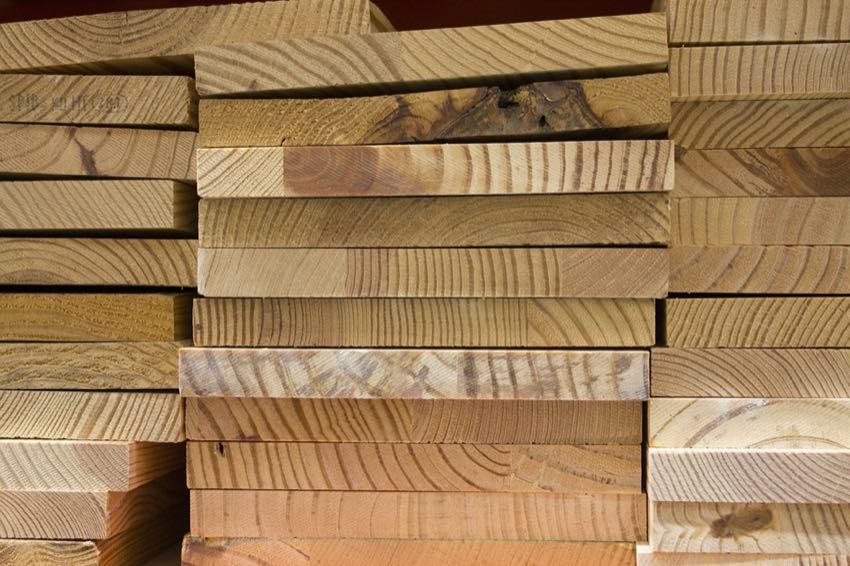
This post may contain affiliate links which means I may receive a commission for purchases made through links. Learn more on my Private Policy page.
Pressure treated wood is a popular choice for construction projects due to its durability and resistance to decay and insects. This type of lumber undergoes a unique process of depressurization and pressurization, where chemicals are infused into the wood to enhance its longevity. You can easily identify pressure treated wood by its greenish tint and markings on the wood. It is essential to note that pressure treated wood used in residential applications no longer contains arsenic and is safe to use. With proper care and regular sealing, pressure treated wood can last for several decades, making it an excellent investment for any construction project.
Why Consider This Product?
When it comes to construction projects, choosing the right materials is crucial. That’s why pressure-treated wood is worth considering. With its unique properties and durability, it offers several benefits that make it an attractive option for various projects.
One key advantage of pressure-treated wood is its ability to resist decay and insect damage. Through a process of depressurization and pressurization, the wood is infused with chemicals that protect it from rot and pests. This means that pressure-treated wood can withstand the test of time, giving you confidence in its long-lasting performance.
Scientific research and evidence support the effectiveness of pressure-treated wood. The infusion of chemicals into the wood fibers creates a barrier that prevents decay and insect infiltration. This makes pressure-treated wood a reliable choice for outdoor projects like decks, fencing, and retaining walls, where exposure to moisture and pests is more likely.
Furthermore, pressure-treated wood has the advantage of meeting industry standards and certifications. Manufacturers follow strict guidelines to ensure that the wood is properly treated and meets quality standards. With endorsements from industry professionals and satisfied customers, pressure-treated wood has gained credibility as a reliable and trustworthy choice for construction projects.
Features and Benefits
Enhanced Durability
One of the standout features of pressure-treated wood is its enhanced durability. The infusion of chemicals deep into the wood fibers creates a protective barrier that makes it resistant to decay and insect damage. This ensures that the wood can withstand various environmental factors and remain structurally sound for years to come.
Chemical Infusion Process
During the pressure treatment process, the wood is placed in a chamber, removing the air and adding chemicals. The wood is then subjected to high pressure, allowing the preservative solution to penetrate deep into the wood fibers. This thorough infusion ensures that every part of the wood is adequately protected, providing optimal resistance against rot, decay, and insect damage.
Greenish Tint for Easy Identification
Identifying pressure-treated wood is a breeze. Unlike untreated wood, pressure-treated wood often has a greenish tint. Additionally, you can also look for tags or markings on the wood that indicate it has been treated. This simple identification feature helps ensure that you are using the right material for your construction projects.
Safer Chemical Alternatives
In the past, pressure-treated wood used chemicals like chromated copper arsenate (CCA), which contained arsenic. However, since 2003, pressure-treated wood used in residential applications has switched to safer alternatives such as alkaline copper quat (ACQ) and copper azole (CA). These safer chemicals provide the same level of protection but without the potential health and safety risks associated with arsenic exposure.

Product Quality
Pressure-treated wood is known for its exceptional quality. Manufacturers adhere to strict industry standards during the treatment process to ensure that the wood is properly infused with preservatives. Certifications and endorsements further testify to the high quality of pressure-treated wood, making it a reliable choice for construction projects.
What It’s Used For
Deck Construction
Pressure-treated wood is a popular choice for deck construction. Its resistance to decay and insects makes it ideal for outdoor use, where the wood is exposed to moisture and pests. Whether you’re building a small platform or a large deck, pressure-treated wood provides the durability and strength needed to create a long-lasting outdoor space.
Fencing
For privacy or security, pressure-treated wood is an excellent option for fencing projects. Its durability ensures that your fence can withstand harsh weather conditions and resist damage from pests, such as termites. Pressure-treated wood offers the peace of mind you need when it comes to protecting your property.
Retaining Walls
When building retaining walls, strength and durability are paramount. Pressure-treated wood is up to the task, providing structural stability and resistance against the elements. Its ability to withstand moisture and soil pressure makes it an ideal choice for retaining walls that can stand the test of time.
Raised Garden Beds
In gardening, using pressure-treated wood for raised garden beds offers several advantages. The wood’s resistance to decay and insects ensures that your garden beds will remain sturdy and intact. Additionally, pressure-treated wood provides a barrier between the soil and the wood, preventing direct contact and potential rot.

Product Specifications
To give you a clear idea of the specifications of pressure-treated wood, here is a table presenting the key information:
| Specification | Details |
|---|---|
| Chemical Treatment | Depressurization and pressurization process with preservatives |
| Color | Often has a greenish tint |
| Chemical Content | Varies, typically 0.40 to 0.60 pounds per cubic foot of wood |
| Common Uses | Decks, fencing, retaining walls |
| Resistance | Decay, insects, rot |
| Safety | Safe for residential use |
| Types | Cedar, redwood, and more |
Who Needs This
Pressure-treated wood is suitable for a wide range of individuals. Whether you’re a homeowner planning a deck renovation, a contractor working on a commercial project, or a gardener building raised garden beds, pressure-treated wood can meet your needs. Its durability and resistance make it an essential material for anyone looking for long-lasting and reliable construction solutions.

Pros and Cons
When considering pressure-treated wood, it’s important to weigh both the advantages and disadvantages. Here are some pros and cons to consider:
Pros
- Enhanced durability and resistance against decay, insects, and rot.
- Safer alternatives to traditional chemical treatments.
- Meets industry standards and certifications.
- Easy identification through greenish tint or markings.
- Versatile for various construction projects.
Cons
- Contains chemicals and should not be burned or ingested.
- Proper drying and preparation are required for staining or painting.
- Higher cost compared to untreated wood.
- Some alternatives, such as cedar and redwood, can be more expensive.
FAQ’s
Q: Is pressure-treated wood safe to use in residential applications?
Yes, pressure-treated wood is safe to use in residential applications. Since 2003, safer chemicals have been used, eliminating potential health and safety concerns. It is commonly used in playgrounds, pool decks, and raised garden beds.
Q: How long does pressure-treated wood last?
With proper care and regular sealing, pressure-treated wood can last for several decades. Its resistance to decay and insect damage ensures long-lasting performance, making it a reliable and durable choice for construction projects.
Q: Can pressure-treated wood be stained or painted?
Yes, pressure-treated wood can be stained or painted. However, it is essential to wait until the wood is fully dried, which can take up to six months. The wood should absorb water droplets before staining, and painting requires proper drying and priming.

What Customers Are Saying
Customers who have used pressure-treated wood for their construction projects have expressed high levels of satisfaction. Here are some testimonials from happy customers:
- “We used pressure-treated wood for our deck, and it has held up beautifully over the years. No signs of rot or insect damage. Highly recommend!” – John W.
- “I built raised garden beds with pressure-treated wood, and they are still going strong after six years. No signs of deterioration. It’s the perfect choice for gardening projects!” – Sarah K.
- “Pressure-treated wood made our fencing project a breeze. It’s sturdy, reliable, and looks great. Would use it again in a heartbeat!” – Mike L.
Overall Value
The overall value of pressure-treated wood lies in its durability, resistance, and reliability. By choosing pressure-treated wood for your construction projects, you’re investing in a long-lasting material that can withstand various environmental factors and pests. With proper maintenance and regular sealing, pressure-treated wood offers excellent value for its price.

Tips and Tricks For Best Results
To get the best results when working with pressure-treated wood, here are some tips and tricks to keep in mind:
- Allow the wood to fully dry before staining or painting, which can take up to six months.
- Use recommended sealants or coatings to enhance the wood’s resistance to moisture and decay.
- Follow local building codes and regulations regarding the use of pressure-treated wood.
- Consider natural insect-resistant options like cedar or redwood for optimal protection.
Final Thoughts
Product Summary
In summary, pressure-treated wood is a durable and long-lasting choice for various construction projects. It resists decay, insects, and rot, making it reliable even in challenging environments. With easy identification features, safer chemical alternatives, and endorsements from satisfied customers, pressure-treated wood meets high-quality standards and offers exceptional value.
Final Recommendation
If you’re looking for a material that can withstand the test of time, pressure-treated wood is the answer. Its ability to resist decay and insect damage, combined with its proven durability, makes it a reliable choice for deck construction, fencing, retaining walls, and raised garden beds. With proper care and regular maintenance, pressure-treated wood can provide you with a dependable and long-lasting solution for your construction needs.
This post may contain affiliate links which means I may receive a commission for purchases made through links. Learn more on my Private Policy page.






